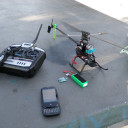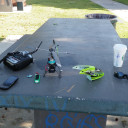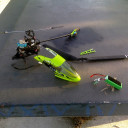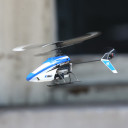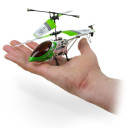Man has always been fascinated with flight, but even more fascinating is hovering flight; whether it be a hummingbird or helicopter.
As a child, I always wanted an RC helicopter of my own, but the barrier to entry at the time was very high. Today the cost of an entry level helicopter has come way down. A three channel (up, down;turn left, turn right; move forward, move backward) helicopter can be had for anywhere between $20 and $60 depending on the size and features.
Durability and electronics are also a huge factor. Todays helicopters withstand more crashes and have better stabilization due to the ever falling cost of electronics. Solid state gyroscopes have replaced mechanical units and are doing a great job at stabilizing todays less expensive helicopters; there’ll be no more of that wild spinning (unless that’s what you want).
Currently I fly a Blade mSR, an Esky Honeybee and I’ve also got a small IR coaxial helicopter that I keep around the office.
Why Are They Addictive?
For me, the allure of flying an RC helicopter comes from the sheer amount of chaos that you exert control over as you fly one of them. The feeling of doing all you can to keep this thing in the air is fine at first. Sooner or later you’ll find yourself trying new maneuvers and when you pull them off successfully it’s quite an achievement; and that’s where the addiction starts.
Learning how the swash plate and the mixing linkages work will also trigger the “Wow! I never knew all that happened while a helicopter flew…” reaction and make you ask even more questions about these machines. Once you start asking questions, and investigate the way these things work, it’s just an upwards spiral from there.
For now I’ll be continuing to fly my Fixed Pitch helicopter while building a Collective Pitch, 450 size helicopter. I’ll leave you with a video of me flying the Esky Honeybee (a $99 4-channel starter machine):

